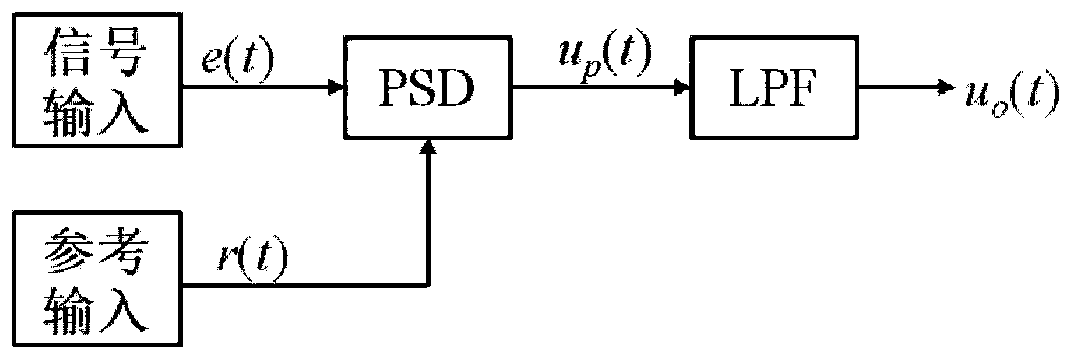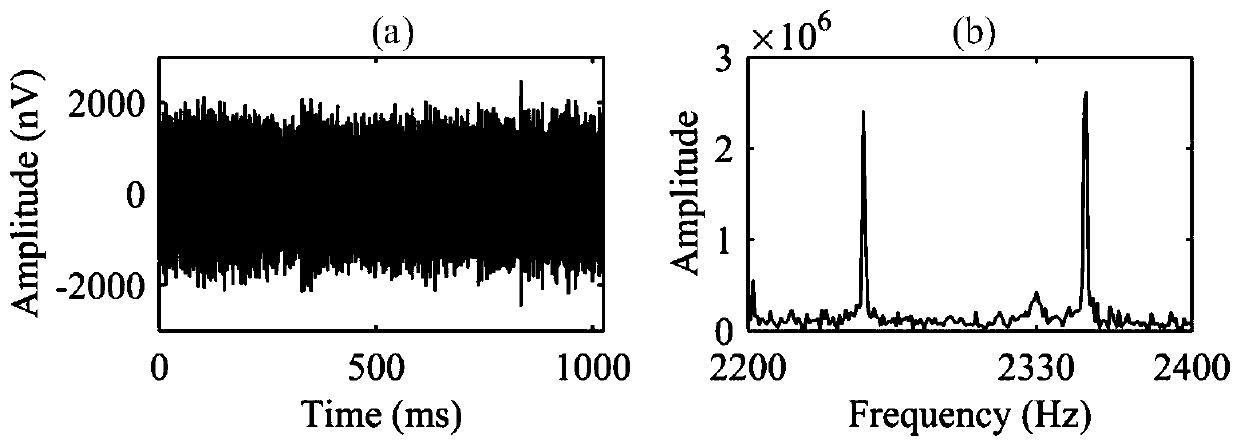A magnetic resonance denoising method and device based on modeling anti-recovery technology
An anti-recovery and magnetic resonance technology, which is applied in electron magnetic resonance/nuclear magnetic resonance detection, measurement devices, electric/magnetic exploration, etc., can solve limitations and other problems, achieve strong noise suppression ability, high precision, avoid magnetic The effect of resonance signal distortion
- Summary
- Abstract
- Description
- Claims
- Application Information
AI Technical Summary
Problems solved by technology
Method used
Image
Examples
Embodiment
[0087] Use JLMRS (a nuclear magnetic resonance water detector developed by Jilin University) to collect a set of actual field noise. For quantitative analysis, add an artificially simulated magnetic resonance signal to the noise. The mathematical expression of the signal is e(t)=320exp( -t / 0.13) cos(2π×2330×t+30°). The signal-to-noise ratio after superimposing the signal and noise is -44.65dB, and the phase-locked amplification denoising method based on the modeling anti-recovery method proposed by the present invention is used for processing. Time-frequency domain waveforms of data containing signal and noise such as image 3 As shown, the signal is completely submerged in noise.
[0088] Using the phase-locked amplification and denoising method based on modeling anti-recovery technology to process field data includes the following steps:
[0089] a. Select the parameters of the orthogonal vector lock-in amplifier: the reference signal frequency is f L = 2330Hz, order 2 of...
PUM
 Login to View More
Login to View More Abstract
Description
Claims
Application Information
 Login to View More
Login to View More - R&D Engineer
- R&D Manager
- IP Professional
- Industry Leading Data Capabilities
- Powerful AI technology
- Patent DNA Extraction
Browse by: Latest US Patents, China's latest patents, Technical Efficacy Thesaurus, Application Domain, Technology Topic, Popular Technical Reports.
© 2024 PatSnap. All rights reserved.Legal|Privacy policy|Modern Slavery Act Transparency Statement|Sitemap|About US| Contact US: help@patsnap.com










